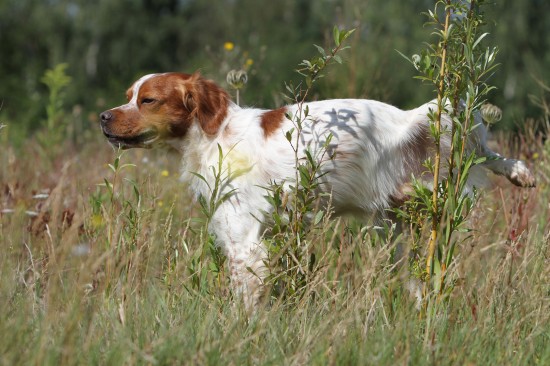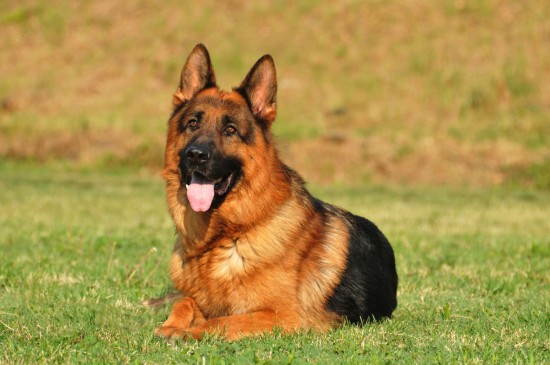
If you have a dog that bites, it is probably fear based; you are likely wondering exactly what you can do to stop it. This unwanted dog behavior is often confused with dominance aggression, when it is really far from it. This article will give a thorough explanation of what fear biting is, including the subtle signs and common causes. Your dog is reacting based on the 'fight or flight' response, and the result can be biting. I'll go over the precise training steps you can be taking, along with the natural remedies that can help for dog aggression.
When your dog bites out of fear or anxiety, he is reacting due to panic with a rush of adrenalin in his body. Fear-biting is the end result of your dog not being able to think in a very stressful situation, and responding inappropriately. Think about the last time you were in a very stressful situation, such as someone cutting you off while driving. Your mature response would be to 'let it go', while your immature 'fear' response is to fight and drive more aggressively. Your fear biting dog is reacting with much the same emotions.
A common misconception is that fear biters have come from some abusive situation; this can be the case, but most of the time it is not. There are normally shy, and nervous dogs ( as with people), and these dogs can develop fear aggression if not properly socialized. In some cases even proper socialization still produces a fear biter. In my experience, the biggest trigger is these dogs never learning to trust; they never developed a strong bond with a patient owner.
Often when a dog bites out of fear, he is doing so response to people who do not understand what the fearful dog is trying to communicate. Your dog may have his ears back, his head down, be growling, backing away, and the less informed person decides to 'comfort' the scared dog. When a person gets too close to a fearful, anxious dog, he causes him to be even more nervous; the result can then end in a bite.
The basis for dealing with a fear biting dog comes with behavioral training, and doing things much different than many 'old school' conventional trainers would suggest. You need to build trust and confidence, doing this slowly and positively. Start with just small steps, and low expectations.
Establish consistent eye contact in response to saying your dog's name. Start with a desirable treat ( such as dried liver) using it as a positive reward. Say your Dog's Name, then quickly move away from him. You want your dog to LEARN to look at YOU when you say their name, then you move. When he moves with you, QUICKLY give him verbal praise, and reward him with a treat. A key is to not show the treats until you are ready to feed it; the goal here is to get eye contact from your dog when you say his name. As he gives more eye contact, give treats and praise. Practice this basic training sequence everywhere: Say Pet's Name, Move, Establish Eye Contact, Praise, Give a Treat.
Counter conditioning is the basis for resolving many behavioral problems. The next time that your pet begins to act nervous, distract her with a favorite squeaky toy or tasty treat. You are teaching your pet to associate noise with a positive experience. When your pet acts less nervous, then give her lots of praise, and a treat.
Exercise is increasingly seen as a way to help many of our dog's behavioral issues, and fear biting is one of them. Exercise is wonderful in decreasing anxiety, and promoting the positive 'brain relaxing' chemicals, endorphins. At least give your dog 30 minutes of exercise twice daily; consider balls to throw at a playing field or use a popular dog toy called a 'Chuck It'.
A type of therapeutic touch, called Tellington Touch has helped many pets with noise anxiety. The most effective area is the ear. Gently hold the ear flap between your thumb and forefinger. Gently stroke from the base of the ear to the ear tip; repeat the motion several times covering different sections of the ear. Use the same fingers to draw tiny circles at the base of the ear. Try both of the techniques on your dog when he is calm. If he reacts well, then try it the next time he appears anxious and fearful.
There are 2 homeopathic remedies that have helped some fear biting dogs, and they could help your dog. Aconite is used in very fearful, restless animals. The dose is 1 30C tab per 20lbs twice dail. Calcarea Carbonica may be more beneficial for those dogs that have fear aggression. A regular dose of 30C every 3-4 days.
Fear biting is a serious dog behavioral problem, but if you implement some of my suggestions, you can really go a long way to stopping it. Start with understanding that you must be patient, and only use positive rewards. Use my 5 step training plan: Say Pet's Name, Move, Establish Eye Contact, Praise, Give a Treat. Consider adding in effective natural remedies, such as Tellington T Touch and homeopathic Aconite.
Dr Andrew Jones is the author of a NEW Free Ebook, Dog Health Secrets, which gives you over 100 safe, natural and effective at home remedies to solve your dog's health problems quickly and easily at home. He reveals what Vaccines to AVOID and what to give, The BEST food to feed, plus HOW to save money on veterinary fees. Go to: Dog Health Secrets Book
 Dogs Communication Via Scent Marking
Dogs Communicatio
Dogs Communication Via Scent Marking
Dogs Communicatio
 10 Things You Need To Consider Before Getting A Puppy
10 Things You Nee
10 Things You Need To Consider Before Getting A Puppy
10 Things You Nee
 3 Common Complaints In German Shepherds
3 Common Complain
3 Common Complaints In German Shepherds
3 Common Complain
 Turtles That Live On Land
Turtles That Live
Turtles That Live On Land
Turtles That Live
 Coton De Tulear Hereditary Health And Genetic Diversity
Coton De Tulear H
Coton De Tulear Hereditary Health And Genetic Diversity
Coton De Tulear H
Copyright © 2005-2016 Pet Information All Rights Reserved
Contact us: www162date@outlook.com